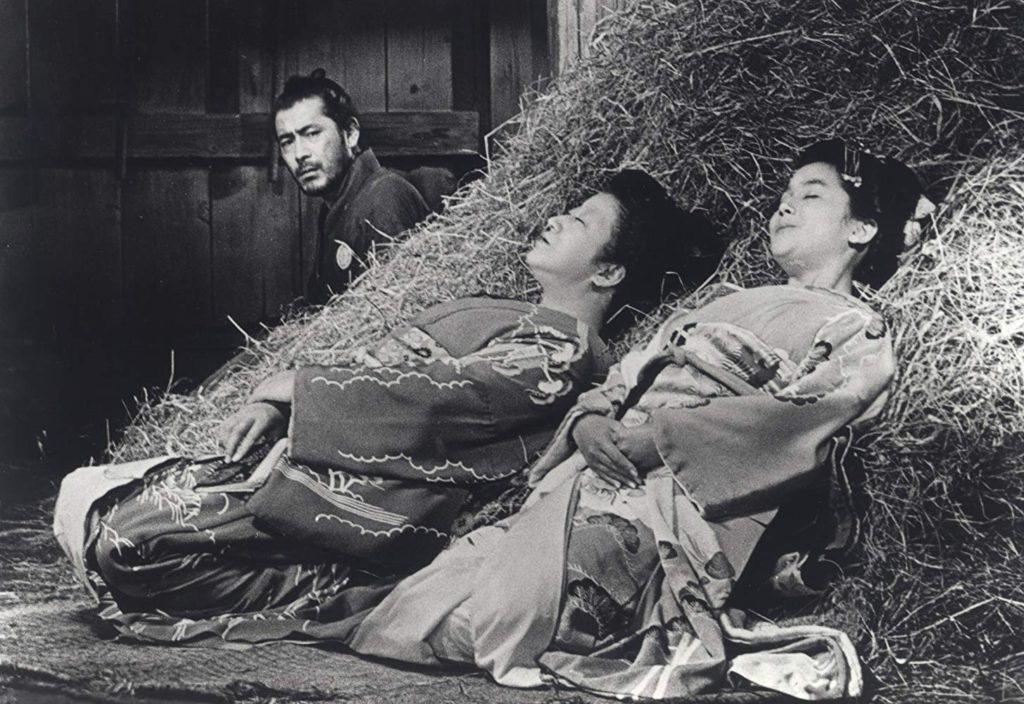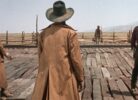To celebrate the upcoming release of my book, Akira Kurosawa: A Viewer’s Guide, due out Dec. 15 from Rowman & Littlefield — preorder here! — I’ll be doing capsule reviews all month covering every single Kurosawa film and posting (very) brief excerpts. These will be short impressions and recommendations, nothing more. For a full, detailed analysis of each, grab the book!
Sanjuro (1962)
It’s interesting that a film best known for its bloody final duel (a scene that proved highly influential to directors like Quentin Tarantino) and a sequel to the often violent Yojimbo is in reality a meditation on non-violence.
Yojimbo was such a huge success that Kurosawa got right to work on a sequel. Sanjuro follows the titular character on another western-like adventure, this time as he rolls into the midst of a clash between two local leaders. Once again, his wits prove just as important as his sword, and once again the villain is played by the great Tatsuya Nakadai, who years later would star in Kurosawa’s final masterpiece, Ran.
Much like the first movie, Sanjuro is fun and action-packed, featuring Toshiro Mifune at his most delightfully badass. This one, though, also comes with a potent subtext. From the book:
This reluctance to kill, this second guessing of the life he has led, makes the duel that closes the film a tragic one rather than a heroic one. Like Clint Eastwood’s “Will” Munny in 1992’s Unforgiven, by the end of Sanjuro the titular character is trying to move past his history of violence, but things outside his control force his hand. That last killing is a fall from grace; an alcoholic plunging off the wagon; the difficult idea that no matter how you try to live, your place in the world has already been decided for you. Sanjuro, heroic samurai, has little true agency in his life. He can come and go as he pleases, he can kill for coin, but that’s all he can ever have. True peace and comfort can never be his.
Yojimbo is perhaps more beloved and is certainly better known, but the themes of Sanjuro make it the more interesting film to me.
Most importantly, however, this film is once again a ton of fun to watch and is highly recommended to anyone who enjoys a great adventure movie. As with Yojimbo, this is a flick about a tough guy who wanders into town, knocks around some bad guys, then wanders off again. If that sounds even remotely appealing to you, SEE THIS RIGHT AWAY. It’s a classic.
Check out my upcoming book for a full analysis exploring this film’s ideas, themes, good points, and bad
You can get the movie in excellent edition by the Criterion Collection.







